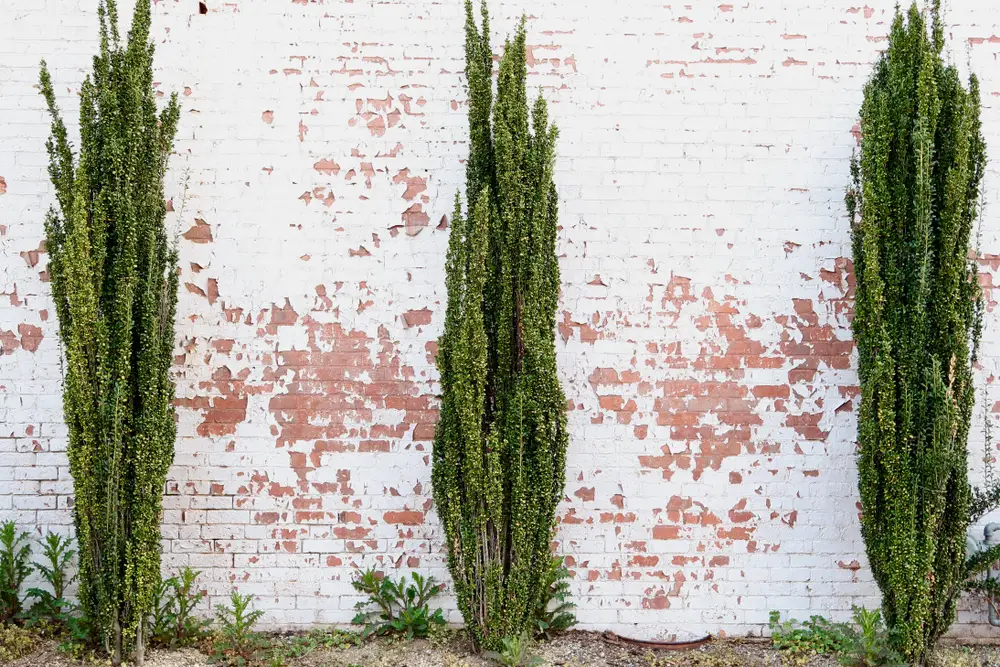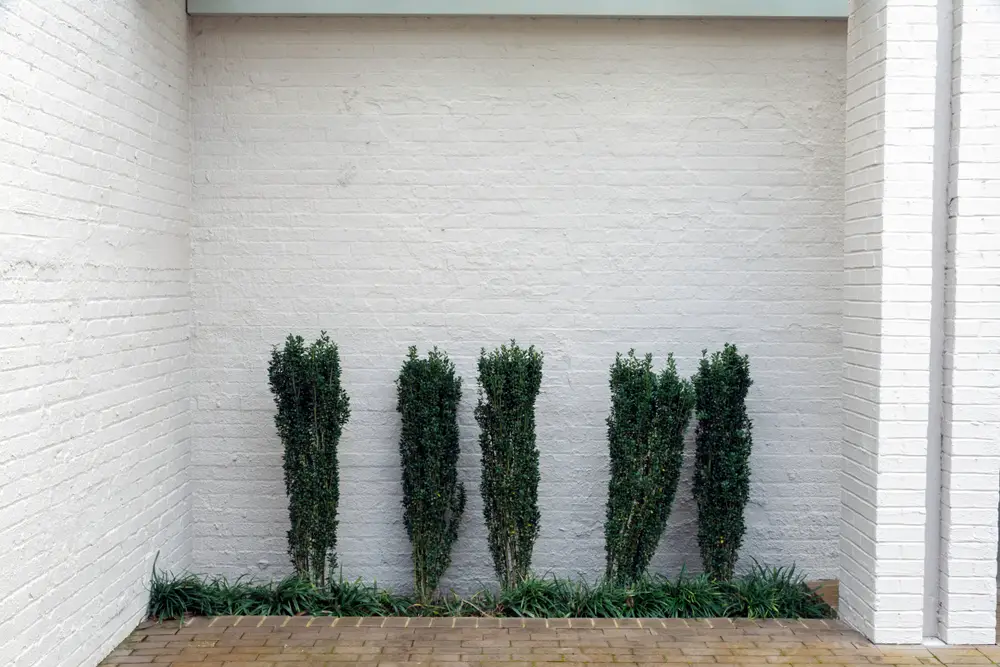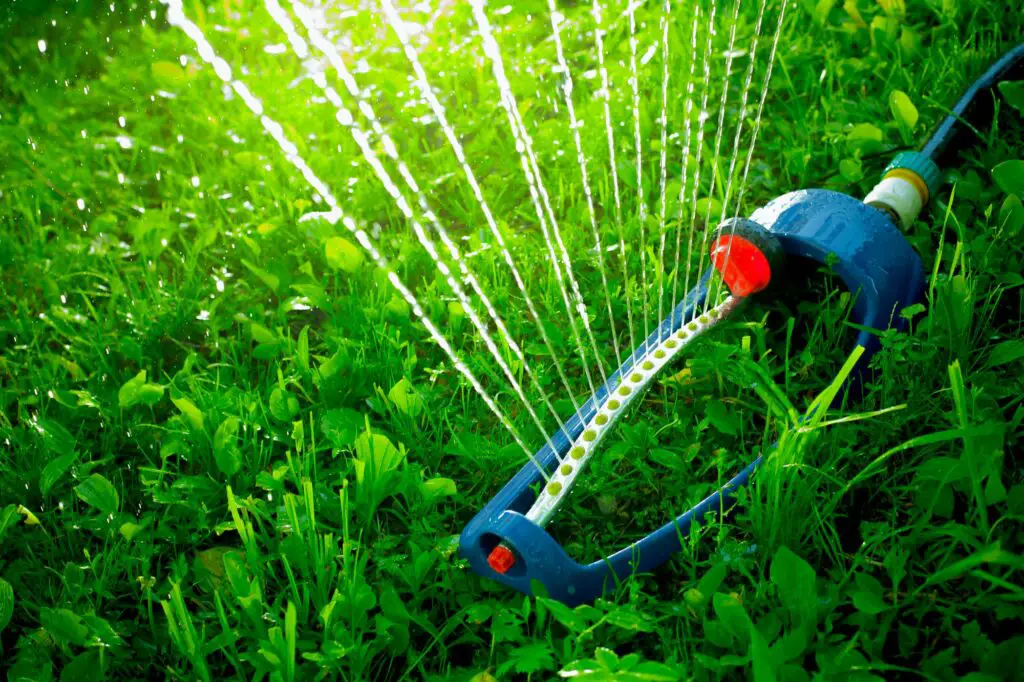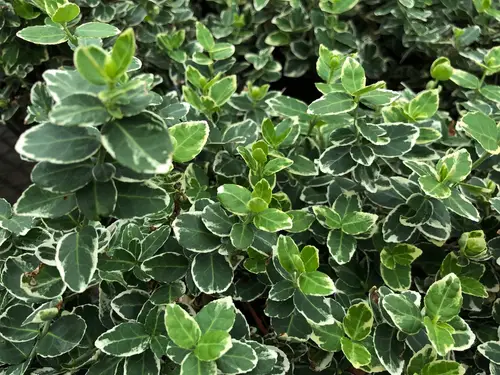Sky pencil holly is a popular evergreen shrub that is known for its slender, upright growth habit and glossy, dark green leaves. It is a versatile plant that can be used in a variety of landscaping settings, including as a hedge, accent plant, or container plant.
However, one common problem that many gardeners encounter with sky pencil holly is browning leaves.
Brown leaves on a sky pencil holly can be caused by a variety of factors, including overwatering, underwatering, root rot, spider mites, and leaf scorch. It is important to diagnose the cause of the problem in order to determine the appropriate solution.
In some cases, the plant may need to be transplanted to a new location with better drainage or protected from harsh sun or wind.
If you are struggling with brown leaves on your sky pencil holly, don’t worry. With a little bit of knowledge and care, you can get your plant back to its healthy, vibrant self.
In the following sections, we will explore the common problems and solutions associated with sky pencil holly, as well as some additional considerations and frequently asked questions.
Key Takeaways on Sky Pencil Holly Turning Brown
- Sky pencil holly is a popular evergreen shrub known for its slender, upright growth habit and glossy, dark green leaves.
- Brown leaves on a sky pencil holly can be caused by a variety of factors, including overwatering, underwatering, root rot, spider mites, and leaf scorch.
- To restore your sky pencil holly to its healthy, vibrant self, it is important to diagnose the cause of the problem and take appropriate action, such as transplanting to a new location or protecting from harsh sun or wind.
Also don’t miss:
- Skip Laurel Leaves Turning Brown in Winter
- Why Is My Zebra Plant Leaves Turning Brown?
- Why Is My Watch Chain Plant Turning Brown?
Understanding Sky Pencil Holly

Sky Pencil Holly (Ilex crenata ‘Sky Pencil’) is a popular ornamental evergreen shrub that is known for its unique vertical growth and evergreen foliage. It is a type of Japanese holly that is native to eastern Asia.
This plant is a slow-growing shrub that can reach up to 10 feet tall and 2-3 feet wide. It is commonly used for hedging, screening, and as an accent plant.
Sky Pencil Holly has a narrow, columnar shape that makes it an ideal choice for small spaces. Its leaves are small, glossy, and dark green in color. This plant produces small, inconspicuous flowers in the spring, which are followed by black berries in the fall. Sky Pencil Holly is a low-maintenance plant that requires minimal pruning.
One of the unique features of Sky Pencil Holly is its vertical growth habit. This makes it an excellent choice for creating a focal point in a garden or landscape. Its narrow shape also makes it an ideal choice for planting in tight spaces, such as along a walkway or near a building.
Sky Pencil Holly is an evergreen shrub, which means it retains its foliage year-round. This makes it an excellent choice for providing year-round interest in a garden or landscape. Its dark green foliage provides a beautiful backdrop for other plants and flowers.
Planting and Care
Sky Pencil Holly is a versatile and low-maintenance plant that can thrive in a variety of locations. Proper care is essential to ensure the plant remains healthy and vibrant. Here are some essential tips for planting and caring for Sky Pencil Holly:
Planting
When planting Sky Pencil Holly, it is essential to choose a location that provides full sun or partial shade. The plant prefers well-drained soil with a slightly acidic pH level between 5.0 and 6.5. It is important to ensure the soil is moist but not waterlogged.
Planting in containers is also an option, making it an excellent choice for patios or decks.
When planting, make sure to dig a hole that is at least twice the width of the root ball. Place the plant in the hole and backfill with soil, firming it down gently. Water the plant thoroughly to ensure the soil is moist, but avoid overwatering.
Care
Sky Pencil Holly requires minimal care once established, but proper care is essential to ensure the plant remains healthy. Here are some essential tips for caring for Sky Pencil Holly:
- Watering: Sky Pencil Holly prefers moist soil but can be susceptible to root rot if overwatered. It is important to ensure the soil is moist but not waterlogged. Watering should be done deeply and infrequently, allowing the soil to dry out slightly between watering.
- Soil moisture: Sky Pencil Holly prefers well-drained soil. Adding organic mulch around the base of the plant can help retain moisture and regulate soil temperature.
- Fertilizing: Sky Pencil Holly does not require frequent fertilizing, but it can benefit from an application of slow-release fertilizer in the spring.
- Pruning: Pruning should be done in late winter or early spring before new growth appears. It is important to avoid pruning more than one-third of the plant at a time, as this can cause stress and damage to the plant.
- Location: Sky Pencil Holly can grow up to 8 feet tall, so it is important to choose a location that allows for adequate space. The plant also prefers high humidity, so it can benefit from a humidifier or misting during dry periods.
Sky Pencil Holly Turning Brown – 4 Common Problems

Sky pencil holly is a popular ornamental plant that is known for its upright, pencil-like shape and glossy green foliage. However, it is not immune to problems, and one of the most common issues faced by gardeners is the browning of its leaves.
In this section, we will explore the various problems that can cause sky pencil holly to turn brown and suggest solutions to address them.
1. Browning Leaves
One of the most common problems faced by sky pencil holly is browning leaves. This can be caused by a variety of factors, including over-fertilization, nutrient deficiency, leaf burn, direct sun, high temperature, dry wind, transpiration, winter burn, and more.
To address this issue, gardeners should first identify the underlying cause and take appropriate measures to correct it. For example, if the plant is exposed to direct sun or dry wind, it should be moved to a more shaded area or provided with a windbreak.
If the issue is related to nutrient deficiency, the plant should be fertilized with a balanced fertilizer.
2. Disease and Pests
Sky pencil holly is also susceptible to a range of diseases and pests that can cause browning of the foliage. Some of the most common diseases include web blight, rhizoctonia aerial blight, and fungal diseases. Pests like spider mites, aphids, and scale insects can also infest the plant and cause browning of the leaves.
To address these issues, gardeners can use insecticides or neem oil to control pests. For diseases, it is important to remove fallen leaves and debris from around the plant to prevent the spread of the disease.
3. Root Rot
Overwatering is a common problem that can cause root rot in sky pencil holly. When the roots are constantly saturated, they can’t absorb oxygen properly, leading to root rot. Signs of overwatering include wilting, yellowing leaves, and soggy soil.
To address this issue, gardeners should reduce the frequency of watering and ensure that the soil is well-draining.
4. Stem and Branch Problems
Sky pencil holly can also suffer from stem and branch problems, such as botryosphaeria canker. This disease can cause circular or irregular brown spots to form on the leaves and can eventually lead to defoliation.
To prevent this disease, gardeners should practice good sanitation by removing fallen leaves and debris from around the plant. They should also prune the plant to improve air circulation and avoid overhead watering.
Diagnosing Brown Leaves
Sky Pencil Holly is a popular landscaping plant known for its columnar shape and dark green foliage. However, brown leaves can indicate a problem with the plant. Here are some possible causes of brown leaves on Sky Pencil Holly and how to diagnose them.
1. Lack of Watering

One of the most common causes of brown leaves on Sky Pencil Holly is a lack of watering. This can happen during dry spells or if the plant is not getting enough water. To diagnose this problem, check the soil around the plant. If the soil is dry, the plant needs water. Water the plant deeply, making sure the water reaches the roots.
2. Extreme Heat
Sky Pencil Holly is a hardy plant, but it can be susceptible to extreme heat. If the plant is exposed to prolonged periods of hot weather, it can start to turn brown.
To diagnose this problem, check the weather in your area. If there has been a heatwave, the plant may be suffering from heat stress. Provide shade or a temporary shelter to protect the plant from the sun.
3. Pests and Diseases
Brown leaves on Sky Pencil Holly can also be a sign of pests or diseases. Scale insects can infest the plant, causing brown leaves and a sticky residue on the leaves. Leaf spot is a fungal disease that can cause brown spots on the leaves.
To diagnose this problem, inspect the plant for signs of pests or diseases. If you find any, treat the plant with an appropriate insecticide or fungicide.
4. Cankers and Bark Damage
Cankers and bark damage can also cause brown leaves on Sky Pencil Holly. This can happen if the plant is damaged by lawn mowers or other equipment. To diagnose this problem, inspect the trunk and branches of the plant for any signs of damage.
If you find any, prune the affected branches and treat the plant with a fungicide to prevent further damage.
5. Botryosphaeria Canker
Botryosphaeria canker is a fungal disease that can cause brown leaves on Sky Pencil Holly. This disease is more common in hot and humid weather conditions. To diagnose this problem, inspect the plant for cankers on the branches and trunk. If you find any, prune the affected branches and treat the plant with a fungicide.
Additional Considerations
In addition to the causes and solutions discussed above, there are other factors that can affect the health of Sky Pencil Hollies and cause them to turn brown.
1. Soil Drainage

Sky Pencil Hollies prefer well-draining soil. If the soil is too compacted or holds too much water, it can lead to root rot and other problems. If the soil is heavy clay, amending it with compost can improve drainage. If the soil is sandy, adding organic matter can help it retain moisture.
2. Windbreaks
Sky Pencil Hollies are susceptible to wind damage, especially in areas with strong winds. Planting them near a windbreak, such as a fence or wall, can help protect them from the elements.
3. Winter Care
Sky Pencil Hollies are hardy in USDA zones 5-9, but they may need some winter protection in colder areas. Mulching around the base of the trunk can help insulate the roots from the cold. Wrapping the trunk with burlap or other material can also help prevent winter damage.
4. Propagation
Sky Pencil Hollies can be propagated from cuttings or by layering. Cuttings should be taken in the summer and rooted in a well-draining medium. Layering involves bending a branch down to the ground and covering it with soil to encourage rooting.
5. Privacy Screen
Sky Pencil Hollies are often used as a privacy screen due to their tall, narrow growth habit. Planting them close together can help create a dense screen.
6. Supplemental Water
While Sky Pencil Hollies are drought-tolerant once established, they may need supplemental water during periods of drought or extreme heat. Water deeply once a week during dry spells, rather than frequent shallow watering.
Frequently Asked Questions
How can I revive my brown Sky Pencil Holly?
If your Sky Pencil Holly has turned brown, it may be due to overwatering, leaf burning, or spider mite infestation. To revive it, you should first identify the cause of the browning and take appropriate action.
If it is due to overwatering, reduce the amount of water you give it and ensure that the soil is well-draining. If it is due to leaf burning, move the plant to a location with less direct sunlight. If it is due to spider mites, treat the plant with an insecticide.
What are some alternatives to Sky Pencil Holly?
If you are looking for an alternative to Sky Pencil Holly, some options include Japanese Holly, Boxwood, or Yew. These plants have a similar appearance and are also evergreen.
What are the pros and cons of growing Sky Pencil Holly?
The pros of growing Sky Pencil Holly include its unique shape, low maintenance, and year-round greenery. The cons include its susceptibility to browning, the need for well-draining soil, and the potential for spider mite infestations.
Why is my Ilex Sky Pencil dying?
There are several reasons why your Ilex Sky Pencil may be dying, including overwatering, root rot, leaf burning, or spider mite infestation. To determine the cause, inspect the plant for signs of these issues and take appropriate action to address them.
How can I prevent dieback in my Sky Pencil Holly?
To prevent dieback in your Sky Pencil Holly, ensure that it is planted in well-draining soil and is not overwatered. Additionally, prune the plant regularly to promote healthy growth and remove any dead or diseased branches.
Why are my Holly leaves turning brown and dying?
Holly leaves may turn brown and die due to a variety of reasons, including overwatering, leaf burning, or fungal infections. To prevent this, ensure that the plant is not overwatered, is not exposed to direct sunlight, and is treated with an appropriate fungicide if necessary.

Hey, I’m Lisa and I’ve been an avid gardener for over 30 years. I love writing, talking and living in the garden! Feel free to connect with me on my socials below


